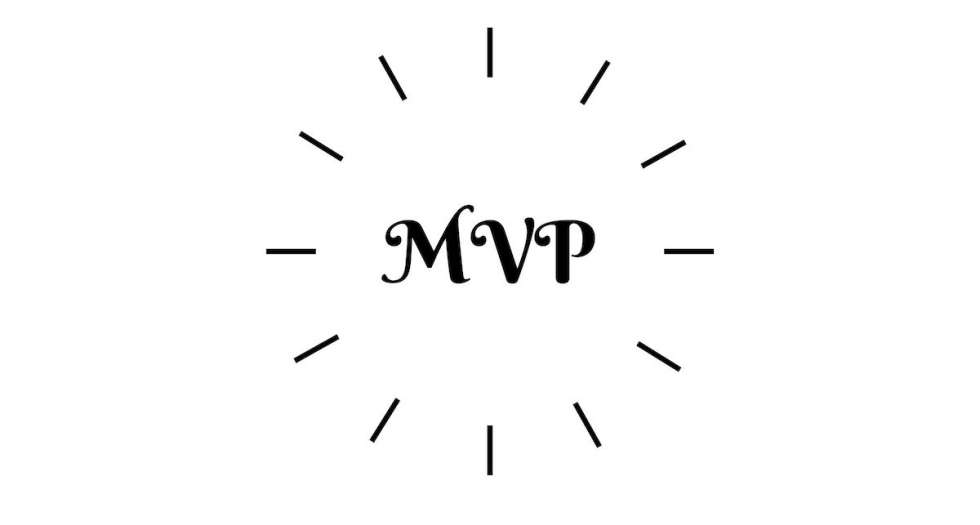A Minimum Viable Product (MVP) is still essential. In fact, in a post-pandemic world where the money is tight, it’s even more important to test your project early on to ensure that it meets the target audience’s demands.
An MVP is a critical step in the development of successful digital products as it allows startups and established businesses to preview and test the product before making an investment. Sometimes what you jot down on paper doesn’t transition smoothly into software, so it’s necessary to test and make adjustments accordingly.
For example, you have an idea for a successful software development project, but don’t know how to implement it, and don’t understand the user experience demanded by the audience. In this scenario, it’s critical to engage in market research and then check the product’s viability before investing more resources to bring it to life.
The primary objective here is to test only the essential features needed to solve your customers’ problems. All the other bells and whistles can be developed and included later when you’re ready to go live.
While there’s a misconception that MVPs are built to accelerate time to market, it’s often built to verify economic viability, attract funding, or gain buy-in from senior leadership.
Before you choose one of the software development models below, you have to have the following ready:
- Market research
- A clear description of your product idea
- The goal of your MVP
- In-depth product use processes
- Feature list
- Feature prioritisation list
- Key strategies
Once you’re clear about your idea, you’ll be ready to start developing your digital product.
So how do you build an MVP in 2020? Let’s take a look.
Build your MVP with an in-house team
If you’re a funded startup, you’ll be well-placed to hire a team of developers to build your product in-house. In this scenario, you handpick your in-house development team and assign each member a specific role to perform a task.
However, if you don’t have the technical know-how, you’ll probably run into some problems or face late project delivery. An in-house team built from scratch needs time to onboard and get a handle on the project, get used to working together, and delivering the value like a well-oiled machine. So, you should have a very strong tech leadership to ramp up your team and bring it up to speed while setting up tools and workflows.
Are you a bootstrapping startup looking to build an MVP? Check out our Startup Growth Platform!
Furthermore, if you haven’t hired any developers before, it can quickly become a challenge. With the ongoing tech talent shortage, it can take some time to hire the professionals you need to build an MVP.
If you bootstrap, it’s most efficient and cost-effective to hire a specialist who understands your specific requirements, the target audience, and the skills and technologies required to build an MVP.
Key advantages of building an MVP in-house:
- Complete control over the project
- A handpicked team of software engineers
- Direct communication with team members
Key disadvantages of building an MVP in-house:
- High costs (especially if you’re based in Western Europe or North America)
- Time to hire
- Tech talent shortage
Build your MVP by hiring freelancer(s)
COVID-19 has taught businesses that it’s possible to get the job done through remote working. So if you want to build your MVP by hiring freelancers, it’s possible to put together a team of software engineers by leveraging platforms like Toptal and Upwork.
Again, you’ll need the technical know-how to identify and hire the right candidates to build an MVP cost-effectively. In this scenario, you’ll get access to a wealth of global talent at your fingertips. By reading through client reviews, test scores, and more, you can quickly put together a team.
Key advantages of building an MVP with freelancers:
- Immediate access to top tech talent
- Highly cost-effective
- No traditional overhead expenses
Key disadvantages of building an MVP with freelancers:
- Lack of control over the project,
- Time differences,
- Lack of commitment (team members can leave when they find higher-paying projects),
- No guarantee you’ll ever get your MVP delivered!
Build your MVP by hiring an expert third-party bespoke developer/IT consultants
When you partner with an established third-party bespoke software development company, you get immediate access to their wealth of experience. In particular, you can benefit from their extensive experience building MVPs.
In this scenario, they are well-placed to advise you about things you may not have thought about, the potential challenges that lie ahead, and so on.
When you’re working with a third-party development partner, you can choose from two engagement models:
Turnkey managed project solution
A turnkey management project solution is perfect for startups that don’t have the necessary technical prowess in developing an MVP in-house. With this engagement model, the whole project will be managed by an expert third-party bespoke development team.
In this scenario, you’ll agree on the features, costs, and deadline and wait for the company to deliver an MVP. As a result, there’s going to be a loss of control, but this engagement model can work successfully with a reputable software development provider.
Key advantages of building an MVP with a turnkey management project solution:
- Immediate access to expert software engineers
- No need for internal technical expertise
- No day-to-day management of the development project, which allows for staying focused on core competencies and helps avoid the in-house team’s distraction from other tasks
Key disadvantages of building an MVP with a turnkey management project solution:
- Lack of control over the project
- Can be cost-intensive
- Other companies competing for the same developers
In-house team extension model
The in-house team extension model helps startups augment their team on-premise with an expert team of developers. This approach allows you to build a fully remote virtual team or a hybrid one that works with your in-house tech talent.
At Evolve, we have worked on several projects following the extended team model. When the UK FinTech startup, e-bate, wanted to build an MVP, for example, they weren’t able to find software engineers with the necessary skills in the UK.
So they chose the in-house team extension model and augmented their team with our developers in Ukraine, UK, and Spain. Together, a successful MVP was built within eight months. What’s more, the company got its first major client a month later and received £1 million in funding the following year.
In the same vein, when the CEO of Hastee Pay wanted to scale and increase their software development capacity, team extension helped realize his vision. In this scenario, the MVP was built in just 12 weeks, and a full-fledged commercial release followed in 24 weeks.
Read more about how to use an Extended Team effectively to build an MVP and MLP!
Key advantages of building an MVP with an extended team:
- Complete control
- Immediate access to top tech talent
- Scale your team up and down as needed
- Cost-effective
Key disadvantages of building an MVP with an extended team:
- Time difference depending on your location
- Choice of the wrong provider of augmented talent
Regardless of the development model you choose to go with, it’s vital to understand that developing digital products isn’t linear. It’s one that goes through multiple iterations to enable continuous feedback, improvements, and more.
This makes it essential to have all the necessary project management and collaboration tools in place before a single line of code is written.
If you have an idea for an MVP but don’t know anything about the required budget or the necessary expertise, we can help. Request a commitment-free call back from one of our in-house experts.

